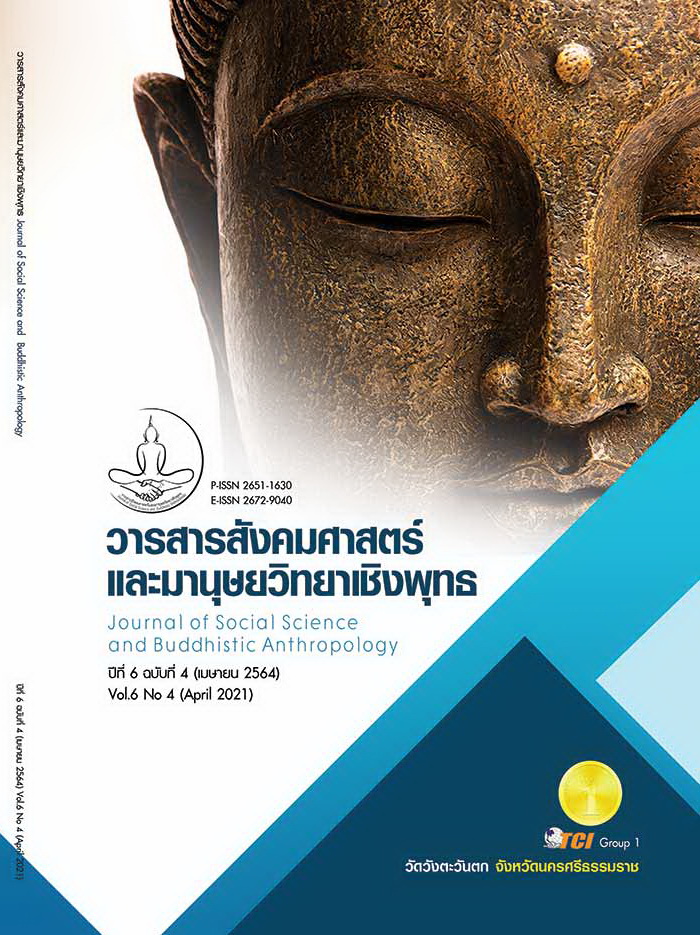THAI AGRICULTURAL-RELATED TELEVISION PROGRAM AND THE FORMATS OF CONTENT WHICH SUITABLE TO FARMERS
Keywords:
Agricultural Program, Television, Content Presentation Format, FarmerAbstract
The objectives of this study were: 1) to explore the preliminary information of Thai agricultural television programs broadcast in analog to digital system and 2) to study the formats of content which suitable to farmers. This is a qualitative research gathering data via collected and recorded on a coding sheet form and in-depth interviews with 20 farmers who regularly watched digital TV. This research found that; 1) From all television programs aired in 2019 and 2020, only 8 of them were agricultural television programs which covered a total of 355 minutes of airtime per week. In 2016, there were 17 television programs with agricultural content, totaling 805 minutes of airtime per week. In 2008, there was a total of 19 agricultural content TV programs, totaling 512 minutes of airtime per week. The agricultural programs’ broadcasting time on television was found to be suitable for farmers' livelihoods in general, with agricultural programs broadcast in the morning between 04:00-07:30 and in the evening between 16:00-21:00. These two periods of time were given feedback as suitable times for farmers to receive agricultural information from various communication channels. 2) As for the format of content which to be suitable for framers, considering the channels of communication, the agricultural programs suitable for farmers must be able to motivate farmers to want to seek more agricultural information. Television and radio programs were found to be the channels with the most interest among farmers. However, they should offer agricultural news and information at a time suitable for farmers. The programs should also be easily accessible and inexpensive. Concerning the message or content in all media channels, it must be adjusted so that farmers can easily understand or be suitable for all education levels. Important information that farmers need includes midstream data such as pest management and downstream data such as distribution and logistics management.
References
เกศสุดา กันแก้ว. (2554). พฤติกรรมการเปิดรับและใช้ประโยชน์จากสื่อด้านการเกษตรของสมาชิกศูนย์ส่งเสริมและผลิตเมล็ดพันธุ์ข้าวชุมชน อำเภอหันคา จังหวัดชัยนาท. ใน วิทยานิพนธ์เกษตรศาสตรมหาบัณฑิต สาขาวิชาเกษตรศาสตร์และสหกรณ์. มหาวิทยาลัยสุโขทัยธรรมาธิราช.
ธาม เชื้อสถาปนศิริ. (2552). ผลการศึกษารอบที่ 30 รายการเกษตรในฟรีทีวี (ช่อง 3,5,7,9,NBT และทีวีไทย เดือนพฤศจิกายน 2551). ใน โครงการศึกษาและเฝ้าระวังสื่อเพื่อสุขภาวะของสังคม (Media Monitor). สํานักงานกองทุนสนับสนุนการสร้างเสริมสุขภาพ (สสส.).
ปทุมมา ลิ้มศรีงาม และ ณัฐกร สงคราม. (2560). สถานการณ์การผลิตรายการโทรทัศน์ทางการเกษตรไทยในระบบทีวีดิจิทัล. .วารสารเกษตรพระจอมเกล้า, 35(1), 109 – 116.
ปรีชา มนิลทิพย์. (2546). ลักษณะการนำข่าวสารการเกษตรจากวิทยุโทรทัศน์ไปใช้ของสมาชิกสหกรณ์การเกษตรจุน จำกัด ในอำเภอจุน จังหวัดพะเยา. ใน วิทยานิพนธ์วิทยาศาสตรมหาบัณฑิต สาขาส่งเสริมการเกษตร. มหาวิทยาลัยแม่โจ้.
พรทิพย์ เย็นจะบก และคณะ. (2547). การสื่อสารเพื่อพัฒนาการเกษตรทฤษฎีใหม่ของพระบาทสมเด็จพระเจ้าอยู่หัวภูมิพลอดุลยเดช. ใน รายงานการวิจัย. สำนักงานคณะกรรมการส่งเสริมวิทยาศาสตร์ วิจัยและนวัตกรรม (สกสว).
สภาพัฒนาเศรษฐกิจและสังคมแห่งชาติ กระทรวงเกษตรและสหกรณ์. (2563). เกษตรกรไทยมีเท่าไรกัน. เรียกใช้เมื่อ 1 มกราคม 2564 จาก https://marketeeronline.co/archives/161682
สุรฤทธิ์ สุวรรณรัตน์. (2553). ปัจจัยที่มีผลต่อการผลิตและเผยแพร่รายการโทรทัศน์เชิงเกษตรในประเทศไทย. ใน วิทยานิพนธ์วิทยาศาสตรมหาบัณฑิต สาขาส่งเสริมการเกษตร. มหาวิทยาลัยเกษตรศาสตร์.
อดิพล เอื้อจรัสพันธุ์. (2562). การใช้สื่อทางการเกษตรของเกษตรกรไทย. วารสารศาสตร์, 12(2), 124-164.
Attavanich, W. et al. (2018). Microscopic view of Thailand’s agriculture through the lens of farmer registration and census data. Forthcoming PIER Discussion Paper. Retrieved January 5, 2021, from https://www.pier.or.th /en/?abridged=จุลทรรศน์ภาคเกษตรไทยผ่
Euajarusphan, A. (2018). Agricultural Information Transmission: A Perspective of Thailand Farmer’s Media Usage (Doctoral dissertation). In Ph.D. Dissertation in Communication, Institute of Communication Studies. Communication University of China.
Wulystan, P. M. (2018). The usage of radio and television as agricultural knowledge sources: The case of farmers in Morogoro region of Tanzania. International Journal of Education and Development using Information and Communication Technology (IJEDICT), 14(3), 252-266.








